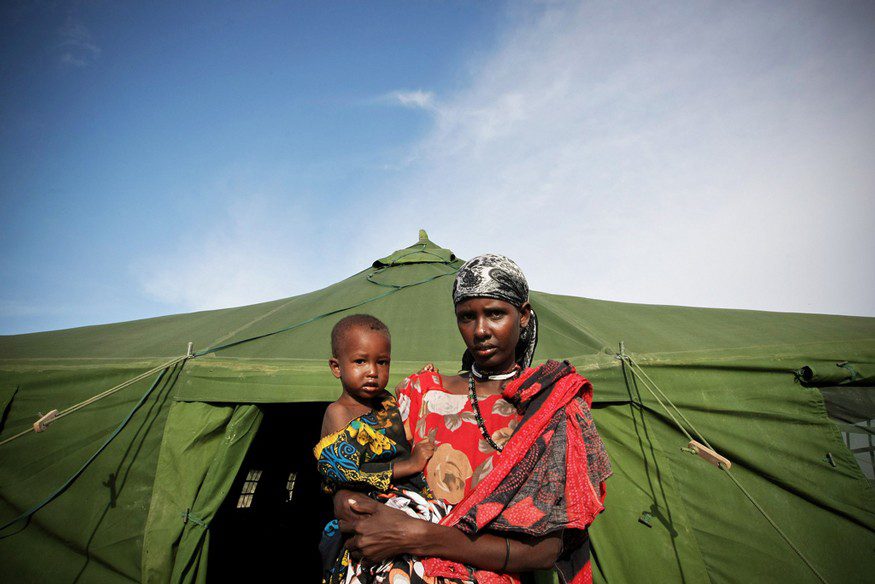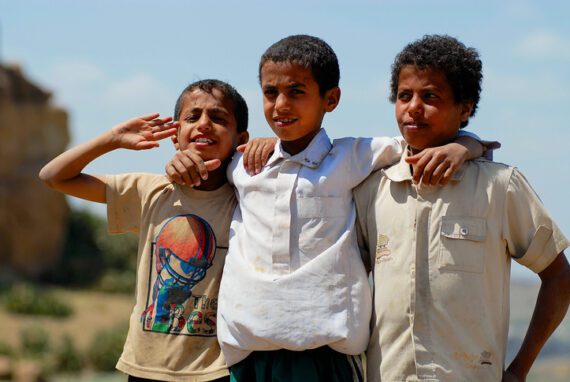By Jordan Teague, Bread for the World Institute
In 2015, 65.3 million people around the world were forcibly displaced. Roughly two-thirds fled to other regions of their home countries, while 21.3 million people became refugees in other countries. In 2016, there are both new and continuing humanitarian crises, notably those affecting people from Syria, South Sudan, and Yemen.
Refugees very often need assistance from their host countries and/or the international community in order to meet their basic needs. Food aid from donors can be in-kind, such as grains shipped from the United States, or cash-based, such as vouchers that enable families to purchase food locally. Both are helpful, with each best suited to different contexts.
Providers of both in-kind and cash assistance need to take into account the makeup of the refugee populations they are trying to help. More than half of the world’s refugees are children, while a majority of the adults are women. The evidence is clear that both children and pregnant or lactating women have specific, critically important nutritional needs. This is especially true of those in the “1,000 Days,” the crucial nutritional window between a woman’s pregnancy and her child’s second birthday. Children who lack essential nutrients during this 1,000-day period, even briefly, typically become stunted – which carries irreversible, lifelong consequences for their health and development.
The average stay in a refugee camp has grown to 17 years, while the 6.7 million people caught in “protracted crises” are refugees for even longer periods – an average of 26 years.
It’s clear from these realities that maternal and child nutrition must be an important consideration even in humanitarian contexts. Often, however, these situations are inaccurately assumed to be short-term emergencies. Refugee communities frequently include multiple forms of malnutrition. Micronutrient deficiencies, such as low levels of iron or vitamin A, often coexist with simply a lack of enough food and calories. A diverse diet, critical for improved nutrition, is difficult to come by in humanitarian crises. There is less access to animal-source foods, such as milk or meat, that provide protein and vitamins. Fruits and vegetables are also less common. Moreover, the risk of malnutrition in emergencies is exacerbated by higher risk of disease due to crowded and unhygienic conditions.
What does this mean for humanitarian assistance? In emergency contexts, the specific nutritional needs of women and children cannot be ignored or left behind. Women who are breastfeeding their children need high-quality diets in order to provide them with the best nutrition. Children who are transitioning to solid foods cannot and should not consume just any commodity sent as food aid.
Much of the in-kind food aid the United States provides in emergencies is grains, such as rice, corn, or wheat. By themselves, they are unable to meet the myriad nutritional needs of refugees, especially women and children. There are new and improved food aid commodities available, but they are less commonly provided. They include micronutrient-fortified foods that can prevent the worst-case scenario — children developing Severe Acute Malnutrition (SAM), which is fatal if not treated. Food aid products such as micronutrient powders can and do save the lives of many children with SAM, however. It is important to note that other forms of food assistance, such as purchasing and distributing foods locally or regionally or providing cash-based assistance, can also provide access to foods better targeted to the nutritional needs of women and children in emergencies.
Fortunately, U.S. foreign assistance programs now emphasize learning from experience in crisis situations and applying the lessons promptly. The USAID Office of Food for Peace, which administers U.S. food aid programs, has just launched its new strategy for 2016-2025. While Food for Peace programs already include nutrition as a core component, the new strategy elevates “improving nutrition” to a critical objective so as to make an impact in the critical 1,000 Days window.
The need for humanitarian relief such as food aid is not going away – conflicts and climate change continue to create refugees. Nutrition, especially the nutrition of young children, must therefore become and remain a top priority for the global community.
Jordan Teague is the international policy analyst for food security and nutrition at Bread for the World Institute.



